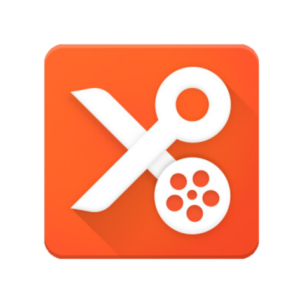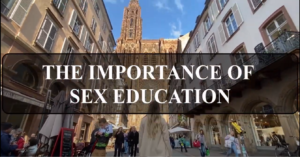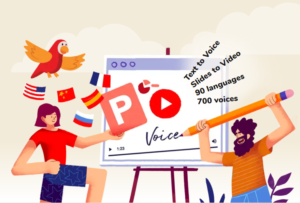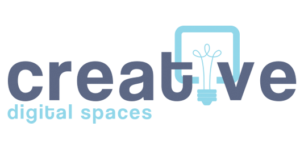
How to set it up?
The YouCut application is available for Apple and Android devices. It is available on almost all the app store platforms, including Google Play Store, so installation is easy: just find the application in the store and download it from there (Google Play Store, Apple App Store).
Working with YouCut on basic elements of video production and video editing is quite easy, and it doesn’t take a long time to learn (or young people already know how to use it since they use this or similar tools for their own social media content).
Video tutorial for beginners
You can find the most useful tutorials for specific tasks or tricks, such as:
How to use video clips with a green screen
How to use freeze frame effect
How to make a split screen effect
How to create a text reflection effect
Some others are available on this playlist.
How to use it in practice?
YouCut is perfect for various activities with young people where they create their own videos. Since it could be used on smartphones, it requires no specialized or expensive equipment. This way, it is more affordable for organizers of activities. Also, participants can use the new knowledge and continue their work after the activity or in their spare time.
We can use video-making workshops to educate young people on different topics. They can also tell a story and promote topics they are interested in.
Some of the different video formats that we can use are
- Short documentaries about societal issues or important themes. It offers a nice balance of focus between content and technical multimedia creation.
- Short fiction films or art films as a tool for young people to express their creativity with their own content. We can be focused more on the technical side of multimedia creation.
- Digital stories as a part of a longer process of a digital storytelling workshop. Here, we are focused more on a story and less on the multimedia side, but it still plays an important part in it. This way, young people tell their own stories in a creative and interesting way.
- Social marketing and other campaigns made by the young people for the young people as well as for the broader audience. Since a short video is an ideal channel to communicate in our current society, it is also a great tool for advocacy and promotional projects, such as social media campaigns that are created and led by young people. This way, video making is not part of the education process but becomes the tool to share and spread the information to a broader audience.
What are good practice examples?
Sharing the information with others
We can use video to promote and share various activities in a “language” that is closer to young people. Juventud de Cabra uses it regularly to reach young people. For example, they presented a study visit to Sweden under the Erasmus+ program.
Digital storytelling as a form of personal expression and speaking about (difficult) experiences through film
A digital story is a multimedia presentation combining a variety of digital elements within a personal narrative structure (a story). Media may include text, images, video, audio (storyteller’s voice, music, …), social media elements, and interactive elements. The whole storytelling process is explained here.
The project ArtDiCo was focused on digital storytelling for people with low digital skills. Part of this project was also unaccompanied minors living in a local migrant center in Greece.
Through regular group meetings, they learned about the digital storytelling process, art, and multimedia. Then, they combined this new knowledge and skills to create their own stories.
Since they did not own or know how to use the computers, we focused on using their smartphones to create their digital stories. One of those stories is here.
Critical Thinking of (Backpack) Journalism Approach
The main principle of being a backpack journalist is to actively and with a critical eye to watch what is happening around you and then share your realizations with others. This way, young people learn critical thinking, and media literacy as well as expressing themselves.
 For example, The European Youth Event (EYE 2021) in Strasbourg offered various workshops on topics relevant to young people and the future of Europe. From Slovenia, two groups of young journalists (high school students) joined the event with a focus on filming the short documentary. One group focused on the “Rise of Authoritarianism.” The other group produced a short documentary film titled “The Importance of Sex Education.”
For example, The European Youth Event (EYE 2021) in Strasbourg offered various workshops on topics relevant to young people and the future of Europe. From Slovenia, two groups of young journalists (high school students) joined the event with a focus on filming the short documentary. One group focused on the “Rise of Authoritarianism.” The other group produced a short documentary film titled “The Importance of Sex Education.”
Some important features of this program:
- The short documentary was created from beginning to end by young people.
- The group was accompanied and mentored by experienced mentors.
- The topics were chosen by the young people themselves. They could choose any topic of any workshop that was available at the event.
- Before the event, they joined a 2-day workshop where they learned about critical thinking, filming and photography, and video-making.
Their products were a mix of information they gathered as well as their own reflection and their point of view. The process also gave them an option to be involved in a program in a more active way – not just as passive participants. Here are their final products.
What are its features that support inclusion?
Video is a universal media that offers communication beyond the limitations of languages. With some help, we can make the experience of video making and watching inclusive and appropriate to be carried out in various environments.
When we create videos with participants, we suggest that you allow each participant to use their own language and their own narrative. The translation comes later, after production, and it can be supported through various tools.
We can adapt videos for different disadvantaged groups.
Deaf and hard of hearing people: You can add subtitles or written text to the video (the option of “Auto captions” is also available for 14 major languages, including Italian, Spanish, English, and French).
For other languages: There are a lot of other subtitling tools that you can use to generate subtitles in less popular languages. Here are a few examples that offer some free services or are not too expensive to use:
 EasySub – Free 30-minute transcriptions per month, and the next 2 hours are only 5 USD in their pay-as-go scheme. It offers subtitling for more than 150 different languages. We tested it for the Slovenian language and it was very accurate with its transcription.
EasySub – Free 30-minute transcriptions per month, and the next 2 hours are only 5 USD in their pay-as-go scheme. It offers subtitling for more than 150 different languages. We tested it for the Slovenian language and it was very accurate with its transcription.- Veed.io – Free for short movies (max 5 minutes) up to 30 minutes per month. Auto subtitling is available in more than 100 languages. Good for social media, such as TikTok or Stories on Facebook and Instagram.
- SubtitleBee – free for 1 video per month that is up to 10 minutes long. It supports videos from YouTube, and Vimeo as well as self-hosted, but you can also upload non-published videos. We tested it for Slovenian, and it was just partially accurate transcription.
- Happy Scribe –Realistically, there are no free minutes for subtitling. The lowest price is 10 USD per month for 120 minutes of service. It offers transcription as well as subtitle generation, is available in a variety of languages, and is handy to use. Tested for the Slovenian language, and it offers very accurate transcription as well as a friendly interface for editing.
People who don’t speak a certain language of the movie: Most of the tools mentioned above can auto-translate the subtitles into different languages. We can also use other automatic translation services, such as Google Translate, DeepL, or automated translation of subtitles provided by YouTube. The disadvantage of automatic translation is that it is not always accurate, especially for smaller languages. We suggest proofreading those subtitles by native speakers.
Visually impaired and blind people: For those, we can offer additional voiceovers or descriptions of what is going on in videos we create. Here are some tools that can help us when working with young people with this kind of disability. Those tools can support us when working with young people who have difficulties reading (for example, Dyslexia):
- Natural Reader converts text, PDF, and 20+ formats into spoken audio so you can listen to your documents, e-books, and other materials. It is also available as an app for smartphones. It is free for personal use (when one person uses it privately), but for public use, it can get a bit pricey. It includes many voice and language options (Slovenian not included).
 Narakeet offers text to or slides to-video with voiceover and Markdown video tools. It provides free and commercial accounts. For free, you get 20 text-to-speech conversions of a maximum of 1KB of narration text (about 1 minute of converted speech). The advantage is that, once you use up all free conversions, it offers an affordable pay-as-you-go option, not just a subscription, so it can be used on a single project (30 minutes is currently 6 euros). It has a wide option of various languages and different voices (Slovenian options are Janez and Mojca).
Narakeet offers text to or slides to-video with voiceover and Markdown video tools. It provides free and commercial accounts. For free, you get 20 text-to-speech conversions of a maximum of 1KB of narration text (about 1 minute of converted speech). The advantage is that, once you use up all free conversions, it offers an affordable pay-as-you-go option, not just a subscription, so it can be used on a single project (30 minutes is currently 6 euros). It has a wide option of various languages and different voices (Slovenian options are Janez and Mojca).- TextMagic offers text-to-voice for more than 50 different languages (Slovenian not included). It is free for 2500 characters (around 2,5 minutes of spoken text). You paste the text into a box and then download an MP3 file.
- TTS Reader is a free text-to-speech reader. It gives users the possibility of reading long files (books) for free. You can also download it as an MP3 file. They also have an Android App on mobile phones. It downside is that it is only available for English and Spanish language.
What are alternatives?
There are a lot of video-making apps. Some of them, but not all, are:
- InShot,
- VivaVideo,
- CapCut,
- Tezza
- ClipChamp,
- Canva Video.
YouCut was our choice because it has a very capable free version. The free version allows many editing possibilities, filters, and options, as well as offers some music and stock stickers and pictures. The final video is also exported without a watermark.
